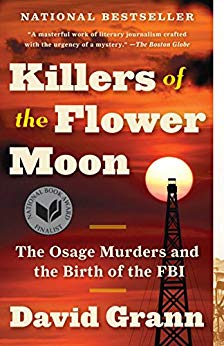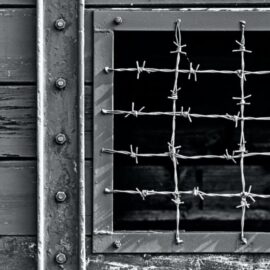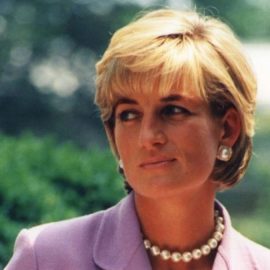

This article is an excerpt from the Shortform summary of "Killers of the Flower Moon" by David Grann. Shortform has the world's best summaries of books you should be reading.
Like this article? Sign up for a free trial here .
Who was Kelsie Morrison, and what was his role in the murder of Anna Brown? How did Morrison’s confession shape the Osage murder case?
Kelsie Morrison was directly responsible for Anna Brown’s murder. Later, Morrison confessed and admitted that he had participated in a murder conspiracy. That’s when the case started to come together.
Keep reading to learn Kelsie Morrison’s story.
Ernest Burkhart’s Arrest
In January 1926, U.S. Marshals arrested Ernest Burkhart. Hale, meanwhile, confidently and politely strolled into the county sheriff’s office to surrender. In conversations with reporters after being taken into custody, Hale was cordial and polite but refused to discuss anything about the case.
Ernest, finally, gave key information about the murder of Anna Brown. He said that the mysterious “third man” spotted with Anna and his brother, Bryan Burkhart, on the last night Anna was seen alive was Kelsie Morrison—a man who was later engaged by the Bureau to work as an undercover operative. Ernest said that Kelsie Morrison was, in fact, the man who had put the bullet in Anna Brown. All the awful pieces of the puzzle were finally coming together.
With her own husband now an admitted party to a plot to murder her entire family, Mollie Burkhart’s life was clearly in danger. She was moved to a hospital in Pawhuska. Once she was away from her husband and his family (and the duplicitous Shoun brothers), her condition markedly improved. Tom White’s team hauled the Shoun brothers in for questioning. But neither man admitted to knowing anything about the murders and both denied administering poison to Mollie. Mollie herself could not accept the idea that her own husband was a key player in the murder of her sisters.
Kelsie Morrison’s Role in the Trial
Under the pressure of Hale’s backroom scheming, Ernest recanted his testimony, claiming that he knew nothing about the murders and taking the stand as a witness for the defense instead of the prosecution. Outrageously, he claimed that Tom White’s agents had only obtained his confession through torture—a lie that was echoed by Hale and Ramsey. White’s one-time star witness was being used against him.
Although J. Edgar Hoover back in Washington knew these charges against the Bureau to be totally baseless, he was fearful of anything that might bring further embarrassment or scandal to the Bureau. Behind the scenes, there was mounting political pressure to sack White and his team.
To bolster their position against Hale, the prosecution decided to first seek a conviction of Ernest Burkhart. With Ernest recanting, however, their case looked like it was falling apart. But the prosecution had one more card to play: Kelsie Morrison, the notorious bootlegger, outlaw, onetime Bureau informant, and the man whom Ernest had fingered as Anna Brown’s killer. The prosecutor brought Kelsie Morrison in to take the stand. This time, Kelsie Morrison decided to cooperate with the government against his former employer, Hale. Kelsie Morrison confessed in open court that he had been recruited by Hale to help eliminate Mollie’s entire family. He then proceeded to narrate the awful details of Anna’s final moments.
He and Bryan Burkhart had gotten Anna drunk at a speakeasy before driving her out to Three Mile Creek. Bryan’s wife, Cole (who corroborated all the details of Kelsie Morrison’s testimony) waited in the parked car to stand lookout. They then dragged the inebriated Anna down into the ravine. Bryan propped her up on a rock and held her still while Kelsie Morrison shot her in the back of the head—with a gun that had been provided by Hale.
The conviction of Ernest Burkhart, especially in state court, was certainly a victory for White and his team. But the case was far from over. They still needed to put Hale, Bryan Burkhart, and John Ramsey behind bars. But they did receive one bit of good news in this uphill battle: the U.S. Supreme Court had finally ruled that Henry Roan’s murder had been on federal land after all, and thus Hale and his henchmen could be tried in federal court.
Kelsie Morrison’s Conviction
On October 29, 1926, both Hale and Ramsey were found guilty of first-degree murder and sentenced to life imprisonment. Neither man made any statement upon the conviction and sentencing. The next year, Kelsie Morrison was convicted of Anna’s murder, although Bryan Burkhart was ultimately given immunity by the prosecution.
In response to the murders, the Osage Tribal Council persuaded Congress to pass a law barring anyone who was not at least half-Osage from inheriting a headright, removing some of the incentive for whites to murder them. Mollie divorced Ernest shortly after he was sent to prison, revolted and outraged by what he and his family had done. Treacherously, many of the co-conspirators—including Bryan and Ernest Burkhart, Kelsie Morrison, and Hale—had been among the crowd of onlookers when Anna’s body was discovered, comforting Mollie in her hour of need. Little did Mollie know that she was being comforted by blood-stained hands.
In his archival research and interviews with descendants of victims of the Reign of Terror, Grann made a shocking discovery—Hale and his gang were not the sole perpetrators of the murderous conspiracy. Although the Bureau had declared the case to be closed when William Hale, Ernest Burkhart, Kelsie Morrison, and John Ramsey were convicted, many more people had taken part in the slaughter. Not all of the murders could be linked to Hale—and justice had never been done for these victims.
Kelsie Morrison was one of many people who participated in murdering innocent Osage people. Morrison’s confession enabled investigator Tom White to find the connection in the murders and solve what was happening to Mollie Burkhart’s family.

———End of Preview———
Like what you just read? Read the rest of the world's best summary of David Grann's "Killers of the Flower Moon" at Shortform .
Here's what you'll find in our full Killers of the Flower Moon summary :
- How the Osage tribe had vast oil wealth, but had it seized by their murderous neighbors
- The brutal and unresolved murders of Osage Native Americans
- The complicated history of the FBI in profiting from the Osage murders






